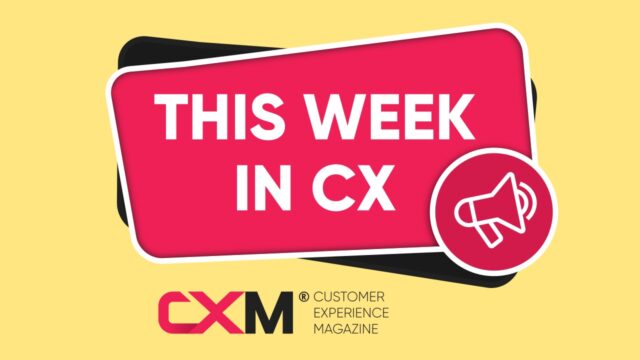May 13, 2025
CX fundamentals all CMOs must know

Customer experience is a key priority for many organizations: according to Gartner research, 57% of CEOs and CFOs view enhancing CX as a leading strategy to fuel growth in the next three to five years.
CX needs an outside-in approach. That means starting with customers’ wants and needs, then working inwards to consider how you will meet these requirements. However, many organizations take the opposite approach, starting with their existing processes to try and provide the best possible CX but without changing your back-office setup. This “customer experience of convenience” typically doesn’t fully meet the needs of the customer. There are five essential elements of CX that all CMOs must know in order to move beyond this:
1) Leveraging Voice of the Customer
Many organizations report low maturity in their approach to Voice of the Customer (VoC). VoC data stems from three sources:
- Direct feedback given to the organisation such as customer surveys, complaints or customer research
- Indirect feedback, where the customer is talking about the organization, but may not be talking directly to the organization. Examples include tweets, email or chat interactions, or call recordings
- Inferred data, which is operational data describing the quality of the CX. This can include customer visits to the website, contact center data, transaction data, etc.
While CMOs can and should play a role in collecting VoC, collaborating with the broader enterprise to audit existing VoC collected by other functions is an often overlooked opportunity. CMOs’ biggest challenge, however, is turning all of this data into action. CMOs should use trends and patterns to discuss what to start, stop and continue doing in relation to CX.
2) Personas
A good persona is one that’s rooted in data. CMOs can use techniques such as customer interviews, surveys and simulated experiences to build this out. Some organisations think they need twenty or thirty personas to fully understand their customers. This isn’t the case – four is often enough. Beyond that, they become too difficult to operationalize. Keep it simple.
3) Customer Journey Maps and Analysis
Customer journey mapping is one of the most powerful tools for improving CX. At a high level, we have the end-to-end customer journey, from buying, to owning, to advocating for your brand. This can help identify the “moments that matter” in the customer lifecycle. At a more granular level, we have individual ‘touchpoint’ journeys, which are still interlinked to other journeys.
When it comes to using customer journey mapping to improve your CX, one possible approach is the Work Forwards Approach. Start with your current journey, and ask yourself the following questions. Which steps:
- Require the customer to expend the most effort?
- Are the most painful for the customer? Where are the emotional lows?
- Require a customer to wait for a long time?
- Are most likely to result in an error by the customer?
When a problematic step is identified, consider:
- Immediate fixes: things that can be easily actioned in 30 days or so
- Solution improvements: things that take more money and time, but have a greater benefit to the CX.
- Experience innovations: actions that cost more and carry more risk, but have the greatest benefit for CX.
4) Customer Experience Strategic Pillars
CX strategic pillars help align various CX activities toward achieving specific objectives and bring coordination to CX activities. A strategic pillar describes an ideal customer experience. What do you want your customers to feel, and what strategic pillars do you need to provide to achieve this?
For example, a high-end hotel wants their customers to feel pampered, valued and enriched. They achieve this via the CX strategic pillars of a luxurious, personalised and flawless guest experience. Everything on this hotel’s roadmap should be geared toward these three pillars. In comparison, a budget hotel might want their customers to feel satisfied, comfortable and at ease via the strategic pillars of affordability, consistency, and well-located accommodations. It’s not enough to say you want to make your customers happy – CMOs must consider how exactly they want their customers to feel at the end of the journey.
5) Measuring Customer Experience
Measuring CX is tightly connected to our first fundamental concept: VoC. Your CX metrics inform your VoC programme, while the VoC programme helps you to measure CX. Leading CX organizations take a cross-functional approach to measuring CX, to drive greater consistency. To ensure actionability, CMOs should ensure that CX metrics include a focus on:
- Employee engagement, for example the satisfaction of frontline, customer-facing employees
- Quality operations, for example delivery timeliness and product reliability
- Customer satisfaction, for example product review ratings
- Loyalty churn and retention, for example loyalty programme enrolment
- Advocacy brand reputation, for example net promoter score (NPS)
These metrics can be presented in different ways. CMOs may choose to present them in a CX or existing marketing dashboard. Others may create a hierarchy of metrics, with the assumption that not everyone at the organization needs to see all the metrics. A customer health score or index is another approach.
By considering these fundamentals of CX, CMOs can be more effective with CX.
Christopher Sladdin is a Director Analyst in the Gartner Customer Service Practice, presenting live on this subject and others at the 2025 Gartner Marketing Symposium/Xpo, taking place 12th & 13th May in London.
Michael Chiu is a Distinguished VP Analyst in the Gartner for IT Leaders & Tech Professionals Practice, presenting live on this subject and others at the 2025 Gartner Marketing Symposium/XPO, taking place 2nd-4th June in Denver.



